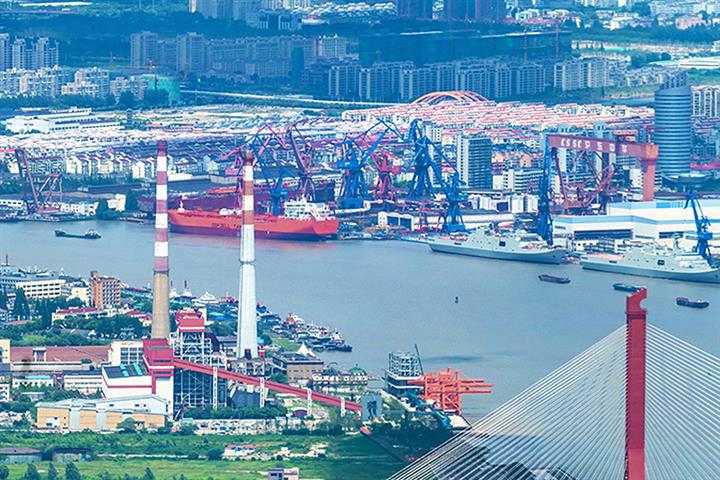 How Can Shanghai's Manufacturing Sector Stand Firm?
How Can Shanghai's Manufacturing Sector Stand Firm?(Yicai Global) June 16 -- The resilience of Shanghai’s manufacturing industry was illustrated all too clearly during the recent two-month lockdown when, undeterred by the enormous challenges, many companies forged on regardless, but the future lies in the city’s strengths in human resources and its well-developed hi-tech sector.
Chipmakers such as Huahong Group were able to keep operating at 90 percent capacity during the lockdown. On the afternoon of June 10, 6,000 employees at Shanghai-based Huahong finally returned to their homes after 70 days of so-called ‘closed-loop management’ where they lived and worked at the plant to keep production lines humming.
Other firms, such as biopharmaceutical and artificial intelligence companies, also did not let the latest wave of Covid-19 get in the way. Last month, Junshi Biosciences’ cancer drug Toripalimab was greenlit to go to market. And AI startup CloudWalk Technology went public on the Shanghai Stock Exchange’s Star Market.
As of now, over 96 percent of the 9,472 industrial companies above a designated size in the city have resumed operations, as per the latest statistics from the Shanghai Municipal Commission of Economy and Informatization. The weekly electricity consumption of such firms grew by 5.6 percent in May from the month before and is already back at 86 percent of what it was the same time last year.
“Shanghai is a leader nationwide in sectors such as integrated circuits, core energy equipment, shipping and marine engineering devices as well as industrial robotics both in terms of scale and levels of advancement. It has made many technological breakthroughs and played a big role in guaranteeing the security of China’s industrial chains,” said Tao Chuanliang, executive vice president of CCID (Shanghai) Advanced Manufacturing [Industry] Research Institute.
Shanghai’s industrial value-added jumped 28.8 percent last year from 2017 to CNY1.1 trillion (USD159.2 billion). The growth momentum of newly emerging sectors has been even greater, at around 13 percent a year, with the value-added reaching CNY365 billion.
Last July, the megacity issued its “14th five-year plan” which called for a “3+6” approach in Shanghai’s advanced manufacturing sectors. The three main sectors of integrated circuits, biopharmacy and artificial intelligence should play a leading role in development nationwide, while the six key industries of electronics and information, life and health, automobiles, high-end equipment, advanced materials and fashionable consumer goods will be new growth points.
Human Capital
Skilled workers are an essential resource needed to boost growth, and Shanghai has gone to great lengths to lure and cultivate its talent pool. The city is home to more than half of the fifth-generation mobile network experts in the country, 40 percent of those in the semiconductor sector and a third of those in the AI industry.
What a medical robotics manufacturer needs is good clinical infrastructure, which means there should be top-notch medical institutions and experts nearby, as well as high caliber talent, which means there needs to be the best clutch of engineers available with international experience, Pan Jing, founder of TMiRob Technology, told Yicai Global, Shanghai is the best choice in both respects and it also boasts very rich medical ecology resources.
The unique advantage of Shanghai’s biomedical sector is that it can attract highly qualified workers, said Chen Jianxin, chief executive officer of ZhenGe Biotech. Shanghai is the first choice for many biomedical scientists who return to China after studying abroad to start their career, even though other Chinese cities are developing their biopharmaceutical sectors.
Developing a good talent pool is crucial for the development of the integrated circuits and software industries, Qiu Wenjin, deputy director of the Shanghai Municipal Development and Reform Commission, said earlier this year. To this end, Shanghai has already introduced some special initiatives such as housing subsidies to attract top talent from around the world.
Editor: Kim Taylor